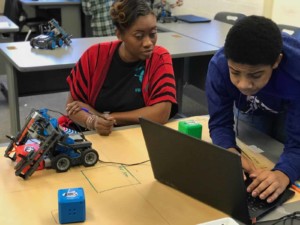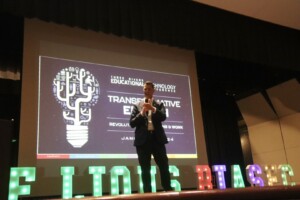The 5 Steps of Effective Technology Integration

In schools, districts, and departments of education alike, a trend toward integrating technology into the education process is on the rise. One could argue that it always has been. But with the proliferation of Internet access in school buildings and the ubiquity of mobile computing devices, educators are taking note and beginning to consider new ways they can include these tools into their classroom instruction.
The formalized field of educational technology is still in its infancy. As a result, professional development and training practices are still being refined. As they are teachers in many school districts are choosing to lead their own technology integration through experimental applications with their students and curriculum. It’s not uncommon to see a teacher bring his or her personal iPad into the classroom to support instruction and label it technology integration. It is, however, ineffective. Following is a systematic approach to integrating technology into the classroom both effectively and efficiently.
1. Identify relative advantage – Before any new technology enters the classroom, determine whether a relative advantage exists. In other words, is there a need that a given technology tool can address. Identifiable needs might include, but are not limited to, lowered student achievement, waning engagement in learning, new school or district policies, or a redefined set of expectations. Rather than finding an interesting new device or instructional software and then fishing around for a problem to solve, perform a needs-based assessment of the classroom, and then search for the most appropriate tool or process to meet that need.
2. Determine objectives and assessments – Once a need has been identified and a given technology’s relative advantage evaluated, the next step is determining objectives and appropriate assessments. To do this, be sure to ask the following questions as you plan: 1) what will students be able to do? 2) how long will it take for them to do it? 3) at what percentage of proficiency will they be able to perform this task? and 3) how are they going to demonstrate that the objective was met? An example of this might read: After three weeks of using a specific math software, all students will be able to recall basic multiplication facts through 12 with 80% proficiency on a five minute paper-based math facts test. The purpose of this design is providing you with a means of evaluating efficacy of your technology integration plan, which will be discussed further in Step 6.
3. Design instructional strategies – As you move closer to integrating technology into the classroom, take into consideration students’ readiness levels along with their physical and affective needs. This will assist in creating appropriate student groupings and a flowing activity sequence of instruction. Naturally, you are not going to want to begin a large technology-based project on day one. That time should be used to teach students how to use the tool after having already performed a prerequisite needs assessment. Similarly, drawing out an instructional step longer than is necessary can negatively affect the technology integration effort and student achievement as well. The ways that a given technology tool is used to supplement instruction and learning should never be a shot in the dark. Rather, they should be a rigorously focused deployment.
4. Prepare the instructional environment – Equally important to designing mindful instructional strategies is ensuring that the learning environment is ready for new technology to be introduced. Aside from building a sound infrastructure for technology-based learning to occur, being acutely aware of the classroom layout, available materials, informational dissemination to learners and parents about new technology, and preparing a backup plan for when technology issues arise ensures the most effective technology integration experience possible for everyone involved.
5. Analyze results and make revisions – Though this is the only step occurring after a given technology is introduced, it is nonetheless essential to the overall integration plan. Teachers at this stage look at the objectives established along with the various assessments administered and make objective conclusions about what worked and what didn’t. Key to any effective and enduring technology integration plan is allowing it to evolve over time through repeated revisions of the previous four steps. Failure to analyze results and revise integration practices can result in frustration, fatigue, and unjustified spending of valuable funds, not to mention missed opportunities for deeper learning and enriched instruction.
That a shift toward technology in education is on the rise isn’t what excites many educators in the profession. It’s that student engagement in learning, academic achievement, and overall growth are rising too. In order to continue these promising trends, time and attention must be given to planning for effective integration of technology in the learning process. Without ensuring such quality control, it’s nothing more than show-and-tell.






Paulina
A good way to integrate education and technology is through appropriate tools and applications. Nearpod is a tool that I would recommend personally! It encourages students to participate actively, they look much more engaged, those interactive features certainly change the pace of a lesson. Check out nearpod.com
R.T.
Great article Dave. A colleague of mine posted it on Google + - I was happy to see that your work made it all the way to Waterloo Region where I work :)
R.T.
Replies
Sam Compston
Enjoyed the reading Dave
Katty
technology can bring a lot of benefits both for a teacher and students and i am convinced of it. I insisted on implementing learning management system in our school and saw how students' attitude to learning has changed, mostly because our lms has social integration (we use JoomlaLMS). we need to understand our students, be with them on the same wave length and the results will come. students are online and we need to be there as well. Formal learning is not working any more. technology is going to stay and we need to take it into consideration developing future learning courses.
[email protected]
Love this content. Good job.